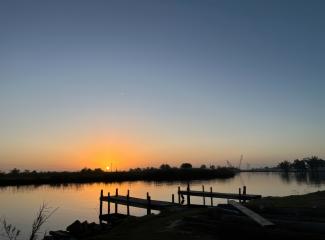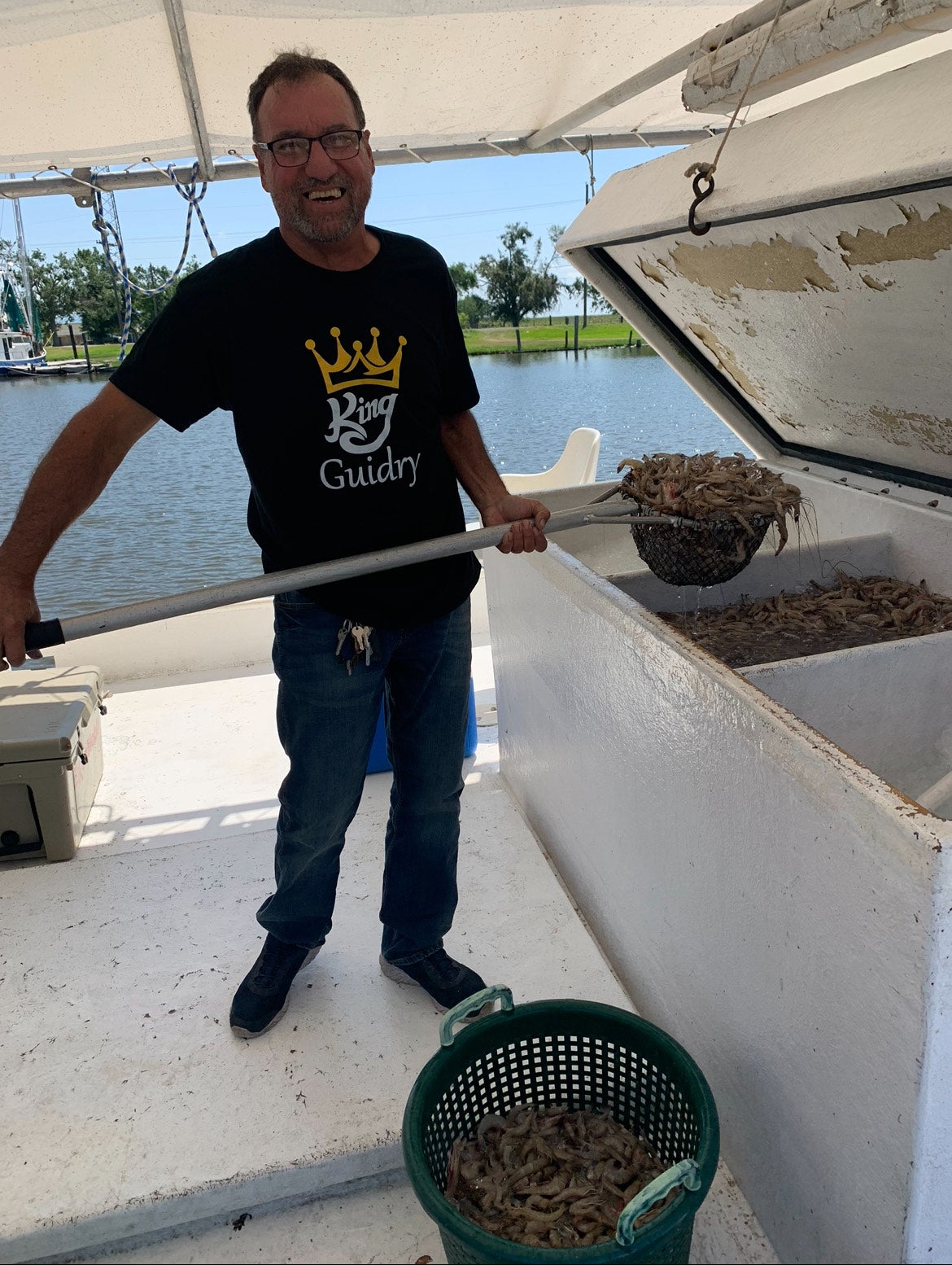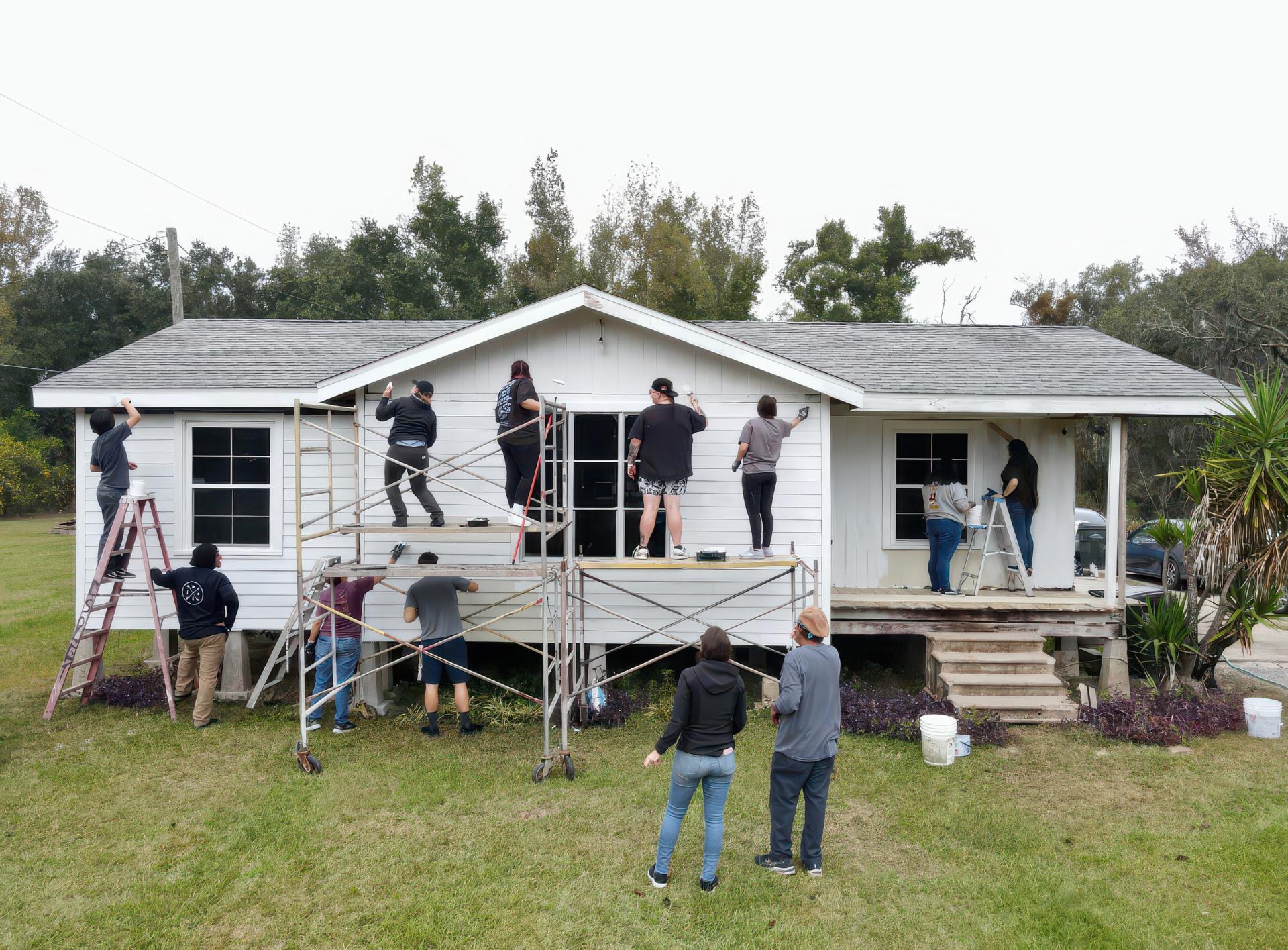
El conocimiento y las prácticas de los Pueblos Indígenas ofrecen más que soluciones inmediatas a los desafíos climáticos: sirven como brújula guía para la resiliencia y la curación. Arraigadas en valores relacionales y aspiracionales, estas enseñanzas enfatizan la adaptabilidad, la solidaridad comunitaria y las profundas conexiones entre sí y con la tierra. Sobre todo, nos recuerdan que la resiliencia se construye a través de la ayuda mutua y el coraje de evolucionar con los tiempos cambiantes.
Para los Houma, nuestra conexión con la costa del Golfo de Luisiana y los fuertes lazos dentro de nuestra comunidad han sostenido nuestra cultura, salud e identidad durante generaciones. A pesar de soportar innumerables tormentas, tanto físicas como metafóricas, nuestra comunidad ha perseverado debido a esta profunda conexión con el lugar. Habiendo perdido tanto por las tormentas y las inundaciones, no nos aferramos a las cosas materiales; en cambio, valoramos nuestras relaciones con la tierra, el agua y con los demás.
En "Serviceberry: Una economía de abundancia", Robin Wall Kimmerer (Potawatomi) escribe que "todo florecimiento es mutuo", destacando que el bienestar de uno es inseparable del bienestar de los demás. Esta verdad se refleja en nuestra forma de vida: cuando ocurre un desastre, lo superamos cuidando a nuestros mayores, compartiendo la pesca del día con nuestros vecinos y reconstruyendo juntos, siempre compartiendo humor en el camino. Para nosotros, el florecimiento no ocurre de forma aislada; prospera dentro de los lazos de la comunidad y la abundancia compartida.

Clayton Verdin, tío de la autora, pescando camarones en el pantano.
Obstáculos al ejercicio de la autodeterminación
Hoy en día, los Houma se enfrentan a un desafío sin precedentes: la tierra que nos ha sostenido durante generaciones está desapareciendo ante nuestros propios ojos debido al aumento del nivel del mar y el hundimiento. Lo que queda por encima del agua ha sido drásticamente alterado por la invasión de agua salada, transformando la vida vegetal y animal "en el pantano". Como un pueblo profundamente conectado con la tierra y el agua, estos cambios han impactado profundamente a nuestra comunidad.
El ex jefe de la Nación Houma, Thomas Dardar, expresó su preocupación ante el Senado de los Estados Unidos en 2012: "Nuestras tierras están desapareciendo, y en esa tierra están las historias de nuestros ancianos, los huesos de nuestros antepasados y el tejido cultural que conforma nuestra nación". La jefa Lora Ann Chaisson recordó una visita a los 10 acres de su padre y dijo: "Donde una vez nos paramos, ya no hay tierra. Donde vivía nuestra familia, no queda ni rastro de la tierra".
A medida que la tierra desaparece, también lo hace la base de gran parte de nuestro conocimiento, lo que hace cada vez más difícil transmitir habilidades esenciales, prácticas y valores culturales vinculados a la tierra. El desplazamiento inducido por el clima conduce a la pérdida del idioma, la erosión cultural y la ruptura de la conexión con las tierras ancestrales, lo que amenaza la transmisión intergeneracional de este conocimiento. Esta es una tragedia que afecta no solo a los Houma, sino a toda la humanidad.
Si a la Nación Houma Unida se le hubiera otorgado el reconocimiento federal, el acceso a los fondos para la mitigación del clima podría haber aliviado parte de la devastación que enfrentamos hoy. Sin embargo, como tribu reconocida por el estado, esta segregación legal profundiza las desigualdades que encontramos, limitando nuestra capacidad para hacer valer nuestros derechos y defender nuestro patrimonio cultural. Además, como nación tribal dentro de los EE. UU., los Houma no son elegibles para recibir apoyo a través del Fondo de Pérdidas y Daños, una iniciativa global diseñada para ayudar a las naciones más vulnerables a los impactos climáticos.
Esta situación ilustra cómo las barreras económicas, sociales, políticas y sistémicas arraigadas limitan la capacidad de los Pueblos Indígenas para responder a un entorno que cambia rápidamente y proteger sus conocimientos, que contienen soluciones clave para los desafíos que se avecinan.

Un proyecto de servicio comunitario para ayudar a un ciudadano de Houma con las reparaciones de su hogar después del huracán Ida.
Conocimiento y Consentimiento Libre, Previo e Informado de los Pueblos Indígenas
A medida que se intensifican los desafíos climáticos, el papel de los conocimientos tradicionales Indígenas en la salvaguardia del patrimonio cultural y el medio ambiente se vuelve aún más crucial. Afortunadamente, existe una creciente conciencia por parte de la sociedad dominante de la validez del conocimiento de los Pueblos Indígenas, y se presta cada vez más atención a su potencial para abordar los desafíos climáticos. Si bien el creciente interés en el conocimiento tradicional es bienvenido, es importante reconocer que se produce después de siglos de esfuerzos sistemáticos para desacreditar, suprimir y borrar los sistemas de conocimiento Indígena.
Sin embargo, este creciente interés en el conocimiento de los Pueblos Indígenas va acompañado de una suposición preocupante: que dicho conocimiento es simplemente un recurso que se extrae y utiliza, en lugar de una relación viva y en evolución vinculada a la cultura y la tierra. Como me recuerda a menudo mi mentor y amigo, el ex presidente tribal Frank Ettawageshik (Banda de Indios Odawa de la bahía de Little Traverse), el conocimiento de los Pueblos Indígenas no es simplemente información, sino una forma de conocer. Es una comprensión holística, interconectada y en constante evolución, arraigada en el contexto de la comunidad, el medio ambiente y la espiritualidad. La ciencia occidental, por el contrario, a menudo trata el conocimiento como algo generado por la mente individual, hechos aislados o invenciones que se pueden patentar o mercantilizar, separándolo de la mente universal más amplia que conecta toda la vida. Este enfoque fragmentado introduce una dimensión temporal, confinando el conocimiento a una forma estática e individualista que limita su adaptabilidad y profundidad, impidiendo que evolucione como una comprensión dinámica y colectiva.
Este concepto erróneo suele ir acompañado de otra suposición profundamente preocupante, que los Pueblos Indígenas están moralmente obligados a compartir estos conocimientos o que estos conocimientos deben ser de dominio público. Estas suposiciones ignoran los principios básicos del CLPI, que trata el conocimiento de los Pueblos Indígenas como si fuera un dato en bruto o una mercancía que debe cosecharse y desconectarse de su contexto cultural, espiritual y ambiental. Esto refleja la misma mentalidad colonial que buscó extraer recursos de los Pueblos Indígenas sin tener en cuenta sus derechos, continuando el legado de explotación y desprecio por la soberanía y la dignidad de sus derechos.
La Declaración de las Naciones Unidas sobre los Derechos de los Pueblos Indígenas reconoce explícitamente el derecho al CLPI y, más recientemente, el Tratado sobre Recursos Genéticos y Conocimientos Tradicionales de la Organización Mundial de la Propiedad Intelectual reforzó la importancia de revelar la fuente de origen cuando las patentes se basan en recursos genéticos y conocimientos tradicionales conexos, vinculando directamente el respeto de los derechos Indígenas con el diálogo mundial más amplio sobre la propiedad intelectual. En conjunto, estos instrumentos internacionales establecen un marco sólido para reconocer y proteger los derechos Indígenas, garantizando que el conocimiento de los Pueblos Indígenas no sea explotado ni malversado, incluso en los debates sobre soluciones climáticas.
Nutriendo el "jardín del conocimiento"
La capacidad de los Pueblos Indígenas para administrar eficazmente sus tierras y salvaguardar su patrimonio cultural depende de su capacidad para ejercer plenamente su derecho inherente a la libre determinación. Esta autodeterminación es esencial no solo para proteger y transmitir conocimientos, sino también para mantener las prácticas que surgen de una visión del mundo profundamente arraigada en una relación holística con la tierra. Prácticas como las quemas controladas, la restauración de humedales y la pesca tradicional han sostenido a naciones tribales como la mía durante generaciones. Cuando estas prácticas se respetan y apoyan, ofrecen beneficios a los Pueblos Indígenas, así como al mundo en general, particularmente en el contexto de los desafíos climáticos en curso.
En lugar de ver la ciencia occidental y el conocimiento de los Pueblos Indígenas como opuestos o incompatibles, o de pedir que el conocimiento de los Pueblos Indígenas se "integre" en la ciencia occidental, el verdadero potencial radica en su colaboración. Kimmerer ofrece una visión convincente de esta asociación a través de la metáfora de un "jardín del conocimiento", donde el conocimiento de los Pueblos Indígenas y las herramientas científicas crecen juntos, lado a lado, al igual que la práctica tradicional de plantar maíz y frijoles. Esta asociación no se trata de fusionar hechos o subordinar un sistema de conocimiento al otro, sino de crear un espacio en el que ambas formas de conocimiento puedan nutrirse mutuamente y, en última instancia, prosperar juntas.
Al igual que coser las hebras de nuestras redes de pesca tradicionales Houma, esta colaboración entrelaza el conocimiento de los Pueblos Indígenas y la ciencia occidental, enriqueciendo nuestra capacidad colectiva para adaptarnos y prosperar. Juntos, crean un mundo en el que ambos sistemas de conocimiento crecen uno al lado del otro en una red relacional de apoyo mutuo que refleja la interconexión de la naturaleza misma.
Rochelle Morgan-Verdin es una orgullosa ciudadana de la Nación Houma Unida. Tiene una maestría en Derecho Internacional y Derechos Humanos y una licenciatura en Estudios Latinoamericanos y Caribeños.
Foto de portada: Amanecer en el pantano de Dulac, Luisiana.
